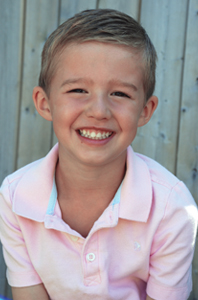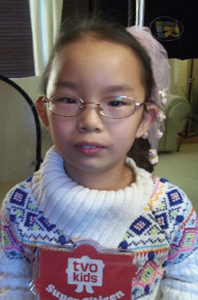As parents, we want our children to feel that they have plenty—enough to share. We want them to know the joy of giving; to demonstrate concern for others and feel the satisfaction of meeting needs beyond their own.
And yet all of us fight the inner temptation to live self-centered lives. The individualistic view of the culture we’re immersed in doesn’t help.
So what’s the best way to instil a generous character in our kids?
Modelling matters
Children are natural imitators who mimic our behaviour, whether negative or positive. That’s why it’s worth making the extra effort to model generosity consistently in everyday life. Our kids will observe and copy our attempts, whether it’s helping someone who has dropped their groceries, delivering baking to a friend or spending time with the elderly. They’ll watch us give attention and respect to other people.
Mother, clinical psychologist and Tyndale University professor Amanda Azarbehi says, “The little things we do day to day are probably having a bigger impact on our children than saying, ‘We’re going to sit down and talk about generosity,’ this one time.”
Wired for empathy
Thankfully, it’s not all up to us to instil this value. God has pre-programmed us to see other people’s needs and experience their pain, Azarbehi adds.
Examining the brain with an MRI machine shows that a specific set of neurons—mirror neurons—light up when someone watches a video of a person getting hurt. We say, “I feel your pain,” and it’s true. We empathize.
Kimberly Franklin, Dean of the School of Education at Trinity Western University in Vancouver and mother of two, agrees. Children are born looking beyond themselves, she says. Every child opens its eyes to see its mother.
“Children are already incredibly very generous. It doesn’t necessarily have to be taught to them,” Franklin says. “When they see needs or suffering, they have this natural desire to reach out and do something kind and generous like share a toy.”
In fact, she says, our expectations of children’s generosity can be too low. Children can exceed our understanding of what it means to be generous at certain stages of development.
“It’s never too young to teach children our life is a gift that needs to be offered back.”
Franklin recommends parents pay attention to moments when a child shows generosity naturally. These are opportunities to draw that quality out by affirming the behaviour.
Nurturing generosity
Azarbehi says children as young as one will start to share, and parents can encourage that behaviour with pictures or objects.
“In my children’s Sunday School class, when they collect the offering, they show a picture of something the church is funding, like a water well,” Azarbehi says.
Ask children, “What do you use water for?” Explain that yes, water is very important, but some people don’t have it and we can give money to help them have water.
Older children have more capacity to imagine someone else’s perspective, she says. The conversation can progress to, “What do you think it would be like if you had to walk five kilometres to get water?”
While Franklin wants her children to think about people living in poverty, she also wants to impart a generosity of spirit. Giving freely of ourselves can be more difficult than giving material things. It’s a skill best learned in the family: “It’s harder to be generous with your family—to not be annoyed when your family is in your space, but be willing to share it.”
What not to do
- Avoid attaching rewards to generosity; for example, a child wins a water gun for raising $50; a skateboard for $500. While the incentive benefits the cause, the focus shifts from helping others to winning prizes. “It doesn’t teach children to feel good about helping others.”
- Avoid praising the child herself, which can make the child feel she has to keep practising generosity to please people. Say, “What you’re doing is good because it’s helping this group of people,” not, “You’re a good person because you do this.”
- Avoid communicating a judgmental attitude. It can be easy to feel superior, thinking we know what is best for other people or that they lack the character to help themselves. But the blessing is in knowing that what we give wasn’t ours to begin with, and by offering it to others we are giving it back to God.
We’re all rich and poor
Franklin advises parents to help children see that everyone is both rich and poor.
“I’m sitting on a lake in a beautiful home with a beautiful view, but there is suffering and poverty in my life, too. My father-in-law is dying.”
She recalls spending time with her son, then four, in Africa, where he could play outside more freely than he could in Canada. On the family’s return home, his school launched a project to raise money for children in Africa. Having known only the peace and happiness of his African playmates, he raised his hand to say, “I’ve been to Africa and there are no poor children.”
Tips for teachable moments
- Make generosity part of your family’s natural language: “We’re the Smith family – we help other people. That’s part of who we are as a family.”
- Talk to your kids about how you tithe at church.
- Allowance jars work well: a “spend it” jar, a “save it” jar and a “compassion” jar. From a $3 weekly allowance, one dollar goes in each jar. You can talk with your child about what they might be able to do to help others with the money from the compassion jar.
- Involve your kids in choosing a Christmas gift from Compassion’s gift guide. Provide visuals: if you choose a chicken, find a small plastic chicken at the dollar store and put it in your child’s stocking. It’s something kids can show their friends—“Look at this chicken, I gave it to a family in Africa and now they have eggs.”
- Check out the “Generosity” lesson, part of Focus on the Family Canada’s Kids of Integrity curriculum by Laurel Kirchner. See kidsofintegrity.com.
Generous Kids

James Peggs, 6, from Saskatoon, Saskatchewan
In his first copy of Compassion Explorer magazine, James Peggs read about 13-year-old Noah, who didn’t want birthday presents. Instead, Noah asked his friends to donate money for soccer balls for Compassion-sponsored kids.
James was about to turn six. So he and his mom went online and chose a swing set for children in Rwanda. Then James invited 16 friends to his party. Together, they raised $263—more than the cost of the swing set! James donated the extra money to a soup kitchen in his neighbourhood.

Chris Cushing, 14, from Rusagonis, New Brunswick
Chris Cushing makes mouthwatering truffles, each coated in creamy chocolate and filled with one of many flavours. All the proceeds go toward safe drinking water for children in Tanzania.
Chris’s goal is $1,500 for a well and water tank. His formula? “Chocolate + Love = Water.”
For Mother’s Day this year, Chris made more than 20 dozen truffles in a week—in between classes, homework, fencing and swimming. Now, sales are up to 1,270 truffles since December 2012. That’s almost $900 toward a well and water tank.

Katie Weeks, 8, from St. Catharines, Ontario
After reading about malaria, Katie Weeks wanted to help protect children from mosquito bites, which can spread the disease. She began raising money to buy 20 bed nets for children in Burkina Faso and India.
Katie made presentations at her school and church. Her Dad helped her set up a website called “Nets for Kids.” In about two months, her total was well over $1,000—enough to buy 135 nets.
TVO Kids heard about it and gave Katie a Super Citizen Award. “I learned that little kids could make a big difference in the world,” Katie said.

Want to know even more? Read this story and more in the latest issue of Compassion today, where you’ll learn how Compassion’s ministry is helping children around the world develop healthy minds, bodies and relationships while discovering God’s love for them in Jesus Christ.
Download the latest issue!



